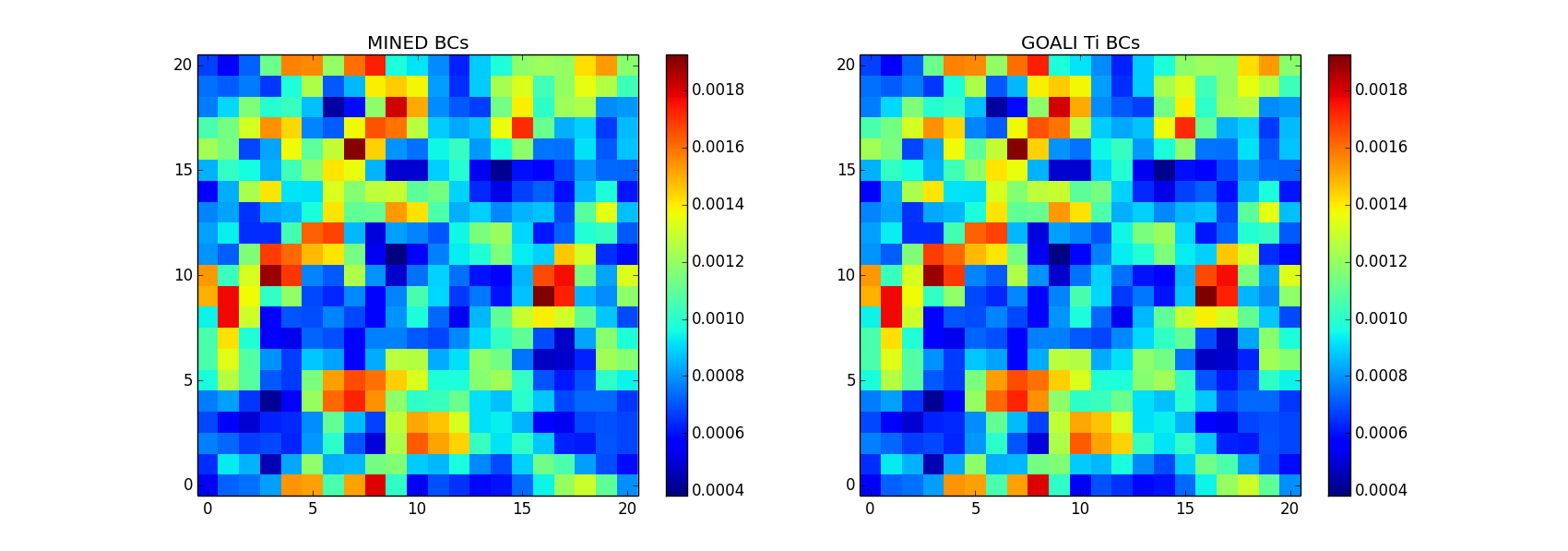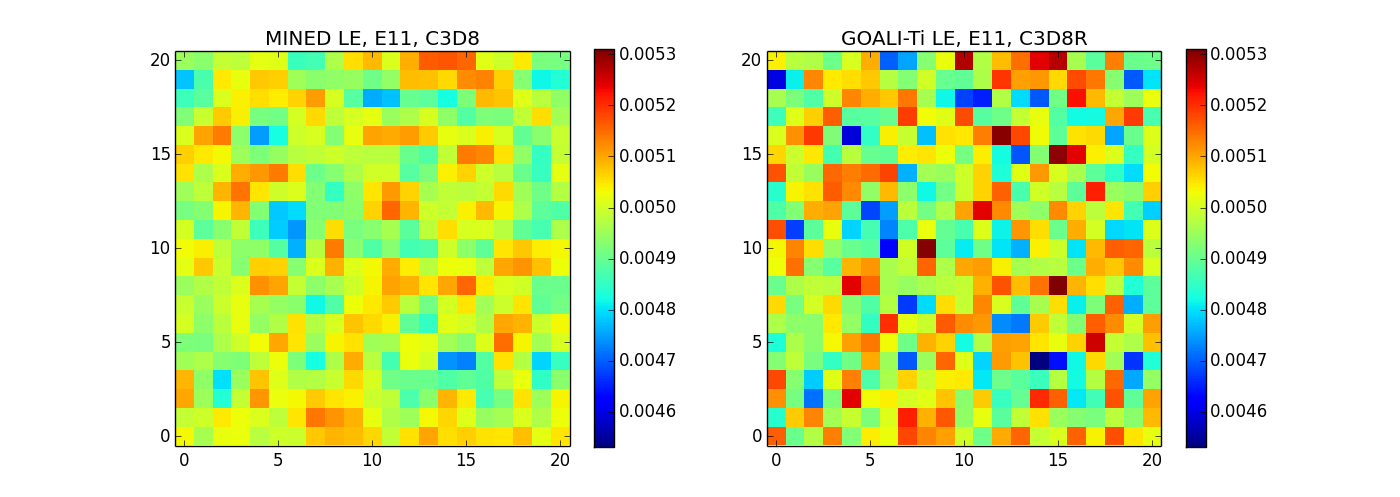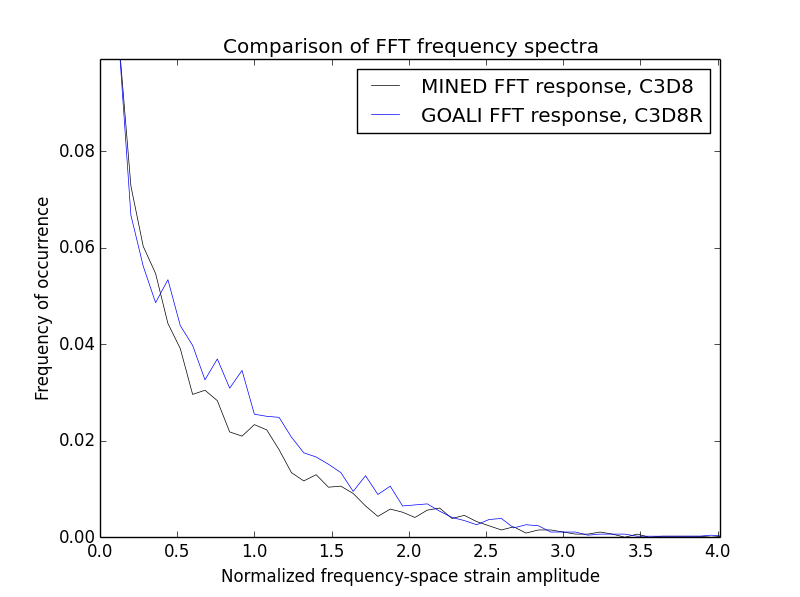Tuning FEM Simulation Parameters for MKS Applicability
Comparison of boundary and loading conditions
In order to make sure the boundary conditions and node-set definitions between MINED group and GOALI simulations were comparable, linear elastic (LE) finite element method (FEM) simulations were performed.
-
Everything held constant between simulations except for the BCs and node-set definitions
-
The MINED simulation framework was used as a baseline
The image below shows the comparison between a slice in the strain fields for the MINED and GOALI simulations
The results of these simulations are identical, so the BCs and node-set definitions are completely equivalent.
Comparison of other simulation parameters
As a final check, simulations were performed to compare the MINED and GOALI results using their respective frameworks.
-
Mean E11 strain differed by 0.00028%
-
Standard deviation in E11 strain differed by 56%
This difference was traced to the use of C3D8R elements in the GOALI simulations as compared to the C3D8 elements for MINED
Comparison of strain fields between MINED and GOALI results with different element types
When the element type in the MINED simulations was changed to C3D8R the simulation results were nearly identical (MASE: 0.049%, maximum error: 0.245%)
Comparison of strain fields between MINED and GOALI results with same element type (C3D8R)
Finally, analyses were performed to compare the FFT-space, strain frequency responses between the GOALI and MINED simulations. These frequency responses are an indication of the periodicity of the responses and the level of noise.
Future simulations will be performed with the C3D8 element type in order to ensure periodicity of the strain response-fields in the MKS.




